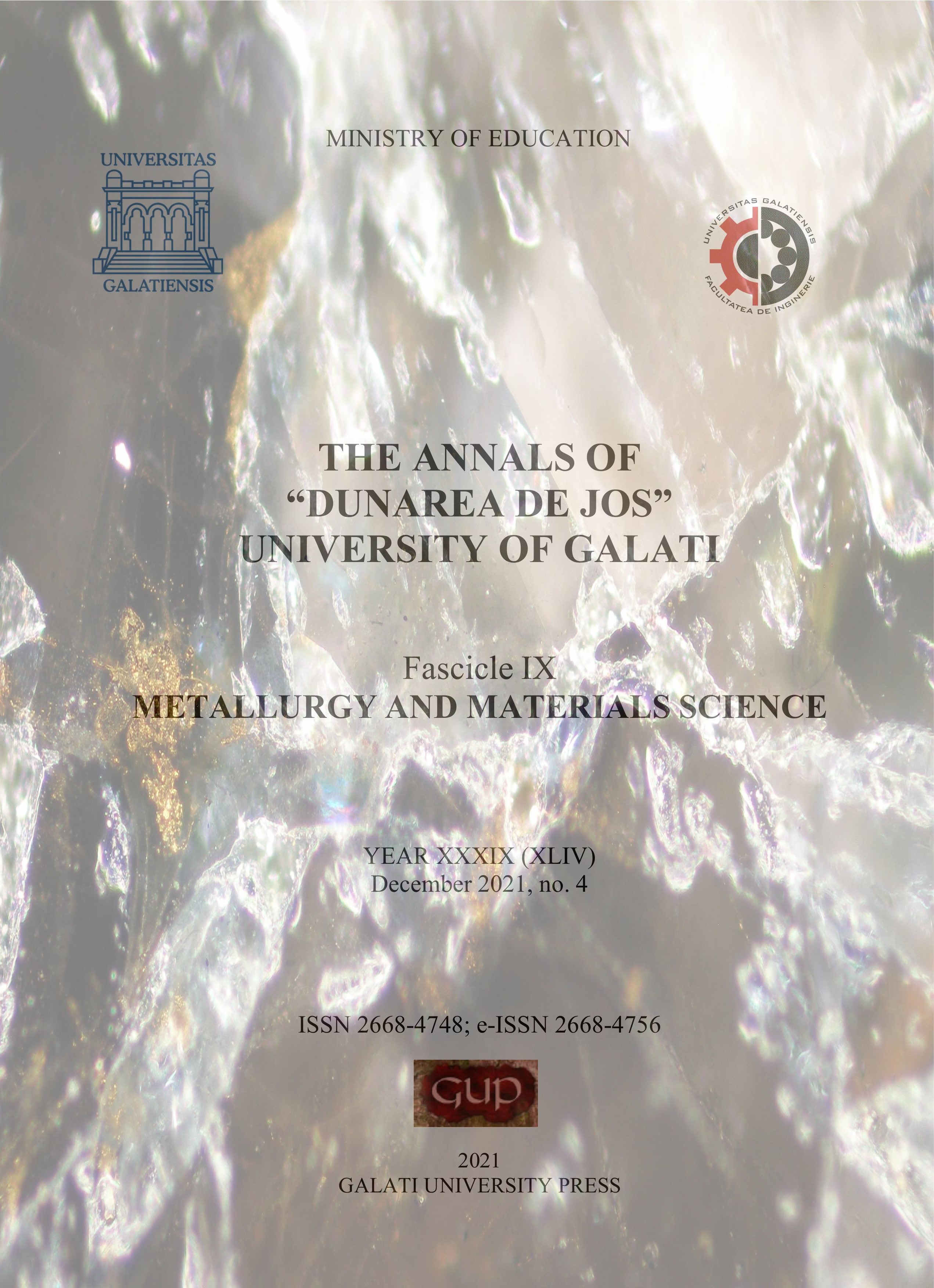Current Challenges and Prospective Benefits of Using UAVs
Abstract
The modern economy completely changed by offering to industry groups the capability to reorganize their operating processes. Nowadays we become observers of similar in scale revolutionary transformations: technologies for the use of unmanned aerial vehicles substantially modified business models and new operating conditions have been developed in various sectors from industries, agriculture to the emergency, parcel delivery or movie industry. In the very near future, clients’ enterprises from multiple sectors of the economy will recognize the first effect of the use of unmanned aerial vehicles (UAVs) in diverse fields - from commercial sectors to examining and exploring the environment or to reduce the impacts of unexpected disasters. The aim of the present review paper is to analyse the opportunities and advantages of using the application of UAVs technologies. On the other hand, not only the devices (drones) themselves are of importance, but also their wider utilization to acquire extraordinary volumes of data.
Downloads
References
[2]. Colomina I., Molina P., Unmanned aerial systems for photogrammetry and remote sensing: A review, ISPRS J. Photogramm. Remote Sens, 92, p. 79-97, 2014.
[3]. Harwin S., Lucieer A., Assessing the accuracy of georeferenced point clouds produced via multi-view stereopsis from unmanned aerial vehicle (UAV) imagery, Remote Sens, 4, p. 1573-1599, 2012.
[4]. Lindenmayer D. B., Likens G. E., Andersen A., Bowman D., Bull C. M., Burns E., Dickman C. R., Hoffmann A. A., Keith D. A., Liddell M. J., Lowe A. J., Metcalfe D. J., Phinn S. R., Russell-Smith J., Thurgate N., Wardle G. M., Value of long-term ecological studies, Austral Ecol., 37, p. 745-757, 2012.
[5]. Tsouros D. C., Bibi S., Sarigiannidis P. G., A Review on UAV-Based Applications for Precision Agriculture, Information, 10, 349, https://doi.org/10.3390/info10110349, 2019.
[6]. Jian Zhang, Jianbo Hu, Juyu Lian, Zongji Fan, Xuejun Ouyang, Wanhui Ye, Seeing the forest from drones: Testing the potential of lightweight drones as a tool for long-term forest monitoring, Biological Conservation, vol. 198, p. 60-69, ISSN 0006-3207, 2016.
[7]. Rawls C. G., Turnquist M. A., Pre-positioning of emergency supplies for disaster response, Transportation Research Part B, 44 (4), p. 521-534, doi: 10.1016/j.trb.2009.08.003, 2010.
[8]. Paul J. A., MacDonald L., Location and capacity allocations decisions to mitigate the impacts of unexpected disasters, European Journal of Operational Research, 251, p. 252-263, 2016.
[9]. Réstas A., The regulation unmanned aerial vehicle of the Szendro fire department supporting fighting against forest fires 1st in the world, For Ecol Manag 234S, 2006.
[10]. Zhang B., Peng J., Li S., Covering location problem of emergency service facilities in an uncertain environment, Applied Mathematical Modelling, 51, 2017.
[11]. Barnes G., Volkmann W., High-resolution mapping with unmanned aerial systems, Surv. Land Inf. Sci., 74, p. 5-13, 2015.
[12]. Martinez J. R., Merino L., Caballero F., Ollero A., Viegas D. X., Experimental results of automatic fire detection and monitoring with UAVs, For Ecol Manag, 234S(2006):S232, 2006.
[13]. Chou T.-Y., Yeh M.-L., Chen Y. C., Chen Y. H., Disaster monitoring and management by the unmanned aerial vehicle technology, In: Int. Archives of Photogrammetry, Remote Sensing and Spatial Information Sciences, Vienna, Austria, 38(7B), p. 137-142, 2010.
[14]. Galindo G., Batta R., Prepositioning of supplies in preparation for a hurricane under potential destruction of prepositioned supplies, Socio Economic Planning Sciences, 47 (1), p. 20-37, 2013.
[15]. Bolten A., Bareth G., Introducing a low-cost Mini-UAV for Thermal- and Multispectral-Imaging, Int. Archives of Photogrammetry, Remote Sensing and Spatial Information Sciences, Melbourne (Australia), 39 (1), 2012.
[16]. Boonmee C., Arimura M., Asada T., Facility location optimization model for emergency humanitarian logistics, International Journal of Disaster Risk Reduction, 24, p. 485-498, 2017.
[17]. Burdakov O., Kvarnstrom J., Doherty P., Optimal scheduling for replacing perimeter guarding unmanned aerial vehicles, Annals of Operations Research, 249, p. 163-174, 2017.
[18]. Chang M. S., Tseng Y. L., Chen J. W., A scenario planning approach for the flood emergency logistics preparation problem under uncertainty, Transportation Research, Part E, 43, p. 737-754, 2007.
[19]. Goldberg J., Dietrich R., Chen J., Mitwasi G., Valenzuela T., Criss L., Validating and applying a model for locating emergency medical vehicles in Tucson. Arizona, European Journal of Operational Research, 49 (3), p. 308-324, 1990.
[20]. Humphreys T., Statement on the Vulnerability of Civil Unmanned Aerial Vehicles and Other Systems to Civil GPS Spoofing, University of Texas at Austin, July 18, 2012.
[21]. Koh L. P., Wich S. A., Dawn of drone ecology: Low-cost autonomous aerial vehicles for conservation, Trop. Conserv. Sci., 5, p. 121-132, 2012.
[22]. Remondino F., Barazzetti L., Nex F., Scaioni M., Sarazzi D., UAV Photogrammetry for Mapping and 3D Modeling-Current Status and Future Perspectives, Int. Arch. Photogramm. Remote Sens. Spat. Inf. Sci., XXXVIII, p. 14-16, 2011.
[23]. Evers L., Dollevoet T., Barros A. I., Monsuur H., Robust UAV planning, Annals of Operations Research, 222, p. 293-315, 2014.
[24]. Merwaday A., Guvenc I., UAV assisted heterogeneous networks for public safety communications, In Proceedings of 2015 IEEE wireless communications and networking conference workshops, WCNCW 2015, p. 329-334), New Orleans, United States, 2015.
[25]. Vu H., Keriven R., Labatut P., Pons J.-P., Towards high-resolution large-scale multi-view stereo, Proc. IEEE Conf. CVPR’09, p. 1430-1437, 2009.
[26]. Thamm H. P., Judex M., The “Low-cost drone”-An interesting tool for process monitoring in a high spatial and temporal resolution, Int. Archives of Photogrammetry, Remote Sensing and Spatial Information Sciences, Enschede, The Netherlands, 36 (7), 2006.
[27]. ***, Commission implementing regulation (EU) 2021/664 of 22 April 2021 on a regulatory framework for the U-space, European Commission.



